Autostrada Wielkopolska – investing with the future in mind
Autostrada Wielkopolska SA is building the third lane, launching state-of-the-art toll systems and investing in environmentally friendly projects. 2024 is…
Read more home
A2 Świecko - Konin | Every kilometer matters
home
A2 Świecko - Konin | Every kilometer matters
The multi-phase road project to create the A2 concession section, in particular the section between Świecko and Nowy Tomyśl, was intended to be environmentally friendly. The construction of this section alone cost EUR 1.3 billion, of which as much as 25 percent (over PLN 1.3 billion) was allocated for the infrastructure related to environmental protection. These were above-standard investments (compared to other projects of this type), as the solutions adopted in the construction exceeded the required standards. This has resulted in a well-designed road infrastructure with appropriate safeguards ensuring comfortable trip to drivers, and safe living conditions and a minimally invasive neighborhood to animals.
The concession section between Świecko and Nowy Tomyśl, as a part of A2 motorway of environmental significance, turned out to be one of the largest projects at the interface of infrastructure and ecology in Europe. According to experts from the European Investment Bank the project stands out as a model of respect for the highest environmental standards. For example, 122 culverts for small game and amphibians were created tailored to the needs of the fauna found in the area, in cooperation with environmental experts. The culverts were located as per indications of the scientists who monitor species living in the vicinity of the motorway.
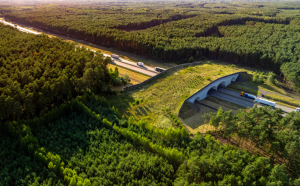
Thanks to the environmental analysis, construction sites for 45 crossings for large animals were also designated so that to maintain their natural migration routes and safe, collision-free passage to the other side of the motorway. Each of the crossings was equipped with tall, over two-meter-high anti-glare screens connected to a guiding fence. Greenery (trees and shrubs) were also planted along the routes to create conditions close to the natural environment. Over 250 kilometers of fencing between Świecko and Nowy Tomyśl and nearly 316 kilometers of fencing between Nowy Tomyśl and Konin were also installed for the safety of motorists and animals living around the motorway.
The manager of the Autostrada Wielkopolska and scientists closely and thoroughly observe a wide variety of animal groups in interaction with e.g. protective screens erected to secure animals, by forcing birds and bats to fly higher over the motorway. In addition sections of natural value of Autostrada Wielkopolska are being monitored to study the motorway impact on the environment and assess the effectiveness of the protective measures used. Conclusions from monitoring sometimes come as a positive surprise even to scientists. In some cases animals use crossings intended for representatives of other species groups or form breeding colonies in structural elements of the motorway infrastructure (bats).

Pro-environmental measures also include monitoring the chemical status of surface and groundwater, performing appropriate water and wastewater management and air cleanliness monitoring, to allow for ongoing analysis of the changing environmental situation. More than 230 ecological water reservoirs have also been created along the entire A2 Świecko – Konin concession section.
Since 2020 the lighting on the motorway has been gradually replaced, less efficient sodium fixtures have been replaced with more environmentally friendly LED fixtures. The upgraded lighting system features a different color of light (white) and an optical system that directs the emitted light onto the motorway rather than the roadside (causing less light pollution). This solution improves visibility on the road and thus driving safety; white LED light is friendlier to drivers’ eyesight than yellow light. In addition, the electricity consumption in such type of lighting is approx. 50 percent lower.
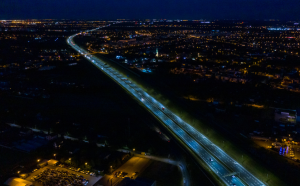
Speed limits on motorways are higher, meaning higher decibel emissions, especially on section with heavy traffic. Therefore monitoring of the motorway impact on the environment and surroundings (including neighboring urban centers) also includes so-called noise pollution. 164 thousand square meters of noise barriers have been built on Autostrada Wielkopolska sections most exposed to noise. Noise barriers have continued to be installed. For example, another section of the motorway bypass of Poznan is being widened to include a third lane. Along the motorway between the Poznań Krzesiny and Poznań Wschód interchanges, new noise barriers will be built and the existing ones will be replaced. The area of the new protection belt will total over 5300 square meters.
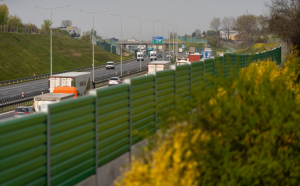
An additional barrier against noise is formed by greenery planted during the construction of Autostrada Wielkopolska, including more than 96,000 trees and nearly 600,000 shrubs. Moreover, the belt of grassland along the motorway right of way covers over 2 thousand hectares!
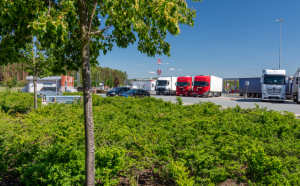
The advantages of driving an electric and hybrid vehicle consist in lower emissions into the atmosphere and lower noise pollution. In order to support the development of electromobility, electric vehicles need to be provided with appropriate infrastructure, including charging facilities, in particular on express roads outside urban centers. That’s why ultra-fast EV charging stations (400 kW power) have been set up on Autostrada Wielkopolska at the Chociszewo (85 km of A2 towards Świecko) and the Rogoziniec (85 km of A2 towards Warsaw) Rest and Service areas. These state-of-the-art chargers make it possible to charge an electric vehicle’s battery in a matter of minutes.
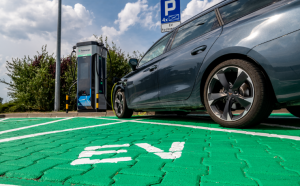
The network of EV charging stations on the concession section of A2 will be expanded successively so that chargers will be available for drivers at all Rest and Service Areas on the Świecko – Konin section. EV charging stations for trucks have also been built at the Chociszewo and Rogoziniec Rest and Service Areas. Such chargers are still rare in Poland for the time being.
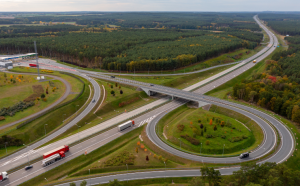
Caring for the environment around the motorway takes various forms, from thoughtful infrastructure and cooperation with scientists, to constant monitoring and searching for solutions that will ensure the motorway’s sustainable development. While maintaining the highest possible environmental standards, sustainable development guarantees services provision to the highest standard. All these efforts are taken to ensure comfortable and safe trip for drivers, and more friendly approach to the environment.